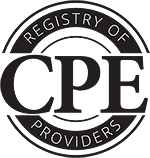This course covers quantitative analysis on the CFA exam. We’ll cover time value of money which is the bedrock of valuation in finance and a key part of the CFA exam. We’ll also go through project selection calculations and the basic statistics exam takers need to know in order to pass. Since, the investments field features significant amounts of uncertainty in investing, we’ll cover probability theory which helps with analyzing that risk as well as probability distributions which help investors to think through risk in investments. We’ll also go over understanding sampling and estimation, and how that can make you a better investor, as well as the uses of hypothesis testing The CFA exam includes questions on technical analysis, so we’ll cover that too. And finally, to pass the CFA exam, you need to have good test taking strategies, so we will go through some things to keep in mind when you are getting ready to sit for the exam.
Prerequisites
No advanced preparation or prerequisites are required for this course. However being part of a series, you may consider taking all related courses in sequence: https://www.illumeo.com/curriculum/cfa-level-1-preparation
Learning Objective
- Identify and solve time value of money problems for different frequencies of compounding.
- Discover and interpret the net present value (NPV) and the internal rate of return (IRR) of an investment.
- Explore measures of central tendency, including the population mean, sample mean, arithmetic mean, weighted average or mean, geometric mean, harmonic mean, median, and mode.
- Explore unconditional and conditional probabilities and explain the use of conditional expectation in investment applications.
- Discover a probability distribution and distinguish between discrete and continuous random variables and their probability functions.
- Discover the issues regarding selection of the appropriate sample size, data-mining bias, sample selection bias, survivorship bias, look-ahead bias, and time-period bias.
- Identify a hypothesis, describe the steps of hypothesis testing, and describe and interpret the choice of the null and alternative hypotheses.
- Explore principles of technical analysis, its applications, and its underlying assumptions.
- Recognize test taking strategies for quantitative methods problems.
Last updated/reviewed: March 27, 2024



Ask the instructor a question about this lesson